
PREV ARTICLE
NEXT ARTICLE
FULL ISSUE
PREV FULL ISSUE
GORNY & MOSCH SPRING 2016 AUCTIONS 236-238
These ancient and world coin auction press releases are monsters, but they include some beautiful images and I'll publish them when I
can find the time. Here's one for the upcoming spring auctions at Gorny & Mosch. -Editor
Spring auction at Gorny & Mosch: Numismatic masterpieces from antiquity, the middle ages and modern times. From March 7th – 9th, 2016 Gorny & Mosch will conduct its traditional spring auction. Three sessions will offer numismatic masterpieces dating back as far as 2,500 years: From antiquity to the medieval period and modern times. As every year, Gorny & Mosch will conduct its spring auction following the Numismata. The auction is comprised of three catalogues. Premium-quality ancient coins will go over the auction block on Monday. Then, in the late afternoon of Monday auction 237 will start, including ancient coins and lots, which will be continued the following day. Wednesday will be devoted to medieval and modern coins. Auction 235 – Premium-quality ancient coins
Greek coins
A very special specimen is an extremely rare and perfectly preserved didrachm from Thermae Himerenses, where the displaced people of Himeras settled down after their city was destroyed in 408. Heracles is shown on the reverse, who, according to local legends, had visited the hot springs of this locality (93, EF, 45,000 euros). A small series of unusually well preserved Cretan strikings will delight the connoisseur. As will a Gortyn drachm of extraordinary quality displaying Europe riding the bull (208, EF, 2,500 euros) and a stater from Phaistos, showing Herakles fighting the hydra on the obverse and the Cretan bull on the reverse (210, VF, 4,000 euros). Mintings of the Near East feature an Arabic tetradrachm of Abiel, daughter of Labas, of the Alexander type (295, EF, 10,000 euros). Furthermore, there are a few pieces in extraordinary condition stemming from the kingdom of Elymais and Parthia of which we’d like to mention the following: a tetradrachm portraying the Parthian ruler Baydad of the 3rd century B.C. (297C, VF-EF, 4,000 euros). And finally, a series of Sasanian coins including many rarities. Roman Republic
Roman Empire
If we are talking about gold, it is certainly the aurei of the soldier emperors, which steal the show. There is Philip II as Caesar (481, EF, 22,000 euros), Trebonianus Gallus (484, FDC, 30,000 euros) or Volusianus (486, EF, 22,000 euros). All of those strikings are extremely rare, specifically considering their condition. Among the silver pieces, one specimen in particular shows the potential of the denarii. The Caracalla denarius, featuring a temple with the statue of Roma on its reverse, in front of which, on each side, six figures are placed, is unique and until now only known as an aureus (470, EF, 3,500 euros). A bit more frequent, but due to their condition noteworthy, are the bronzes offered at the auction. A good example is a sestertius of Nero. Its reverse displays the distribution of the congiarium (427, EF, 17,500 euros). But there are also quite a few rarities: for example a sestertius of Britannicus (421, EF, 57,500 euros) or a medallion of Constantius Chlorus prior to his appointment as Augustus (498, EF, 8,000 euros). Last but not least, Byzantine coins and gold coins of the great migration period will end this session. Auction 237 – Ancient coins and lots
From the collection of Sasanian coins, out of which the top pieces were sold at auction 236, a bit less attractive specimens will be sold in this auction. For a real collector though it shouldn’t matter that the condition of an extremely rare bronze coin of Vahram I from Balkh is only rated very fine (1532, 250 euros). Gold, silver and bronze – and lead in the case of Byzantine seals – auction 237 contains many Roman and Byzantine strikings, which are not seen every day. Also please take a good look at the lots. Next to more Sasanian coins, numerous other pieces, sensibly put together and favorably priced, will be on offer. After all, Gorny & Mosch is known for its famous lots! The same goes for the book lots, which, this time, consist of literature concerning the Near and Far East, some of the books are definitively rare and hard to detect on the market. Auction 238 – Middle Ages / Kolb Medal Collection / Islam Collection
German Coins
But also among the talers many rare pieces in outstanding condition can be found. For example a 1694 Hamburg double taler featuring the gorgeous city seal displayed in a baroque cartouche (3044, VF-EF, 10,000 euros). But let’s not forget about the regiment taler of the city of Ravensburg, showing on its reverse the steepled city view and the city wall. Only 187 pieces of this rarity were minted (3068, VF-EF, 5,000 euros). This is followed by a section of post-1871 German coins, all in extraordinary condition. Here are a few examples: Anhalt, 5 marks 1914, FDC, estimated at 500 euros (3103); Bavaria, 5 marks 1874 D, NGC PF 65, Proof, estimated at 4,000 euros (3109A); Prussia, 2 marks 1877 A, Proof, estimated at 1,000 euros (3127C); Weimar Republic, 5 reichsmarks 1930G, NGC PF65, Proof, estimated at 7,500 euros (3202A). Kolb Collection
World Coins
The Portuguese coins also offer a specimen, which can only rarely be seen. This Morabitino of Sancho I, in a stylized design, shows the King riding a horse (3405, EF-FDC, 15,000 euros). The most expensive piece of the auction comes from Russia. It is an extremely rare medal of merit of Paul I, which was awarded to Counts, Khans, as well as to Serbian and Montenegrian Voivodes (war lords) who served the czarist government (3414A, VF+, 100,000 euros). This is probably the only known specimen on the market! Please also take a look at our medieval and modern coin and medal lots, which are not only interesting but also favorably priced. There is, for example, a convolute of German coins, which represents an entire private collection. The sum of the nominal value amounts to 1,730 euros (3499). The estimate is 2,000 euros. A collection of Islamic coins is to follow, among which there are many Arab-Sasanian coins from the Sasanian Collection, of which most of the coins were offered in the prior two auctions. Lastly, there will again be a big part of strikings of the Ottoman Empire for sale, like a very rare 4 kabir ashrafi from Ahmad III (3550, VF-EF, 6,000 euros). All catalogues may be viewed online at http://www.gmcoinart.de/online-katalog and ordered at Gorny & Mosch, Giessener Münzhandlung, Maximiliansplatz 20, D-80333 Munich, Tel. +49 / (0)89 / 24 22 643-0, Fax +49 / (0)89 / 22 85 513. 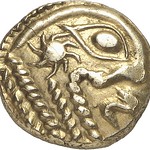 
No. 2: BELLOVACI (North Gallia and Gallia Belgica). Stater, ca. 60-25. D&T 271 (this piece). Extremely fine. Estimate: 3,200 euros 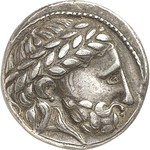 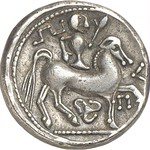
No. 24: AKRAGAS (Sicily). Tetradrachm, ca. 420. From MMAG Auction 62 (1982), 34). Very rare. Good very fine. Estimate: 12,000 euros  
No. 35: KATANE (Sicily). Tetradrachm, ca. 450-445. HGC 566 (this piece). Very rare. Most likely one of the best specimen of this type. Extremely fine. Estimate: 25,000 euros  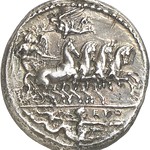
No. 65: SYRACUSE (Sicily). Tetradrachm, ca. 413-409. Signed piece of Euth… and Phrygillos. From Auction NAC 2 (1990), 101. Extremely fine. Estimate: 18,000 euros 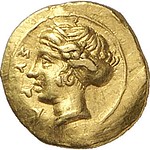 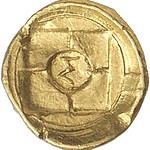
No. 68: SYRACUSE (Sicily). Gold didrachm, ca. 405-400. Unique. From Sternberg Auction 19 (1987), 67. Extremely fine. Estimate: 1,500 euros 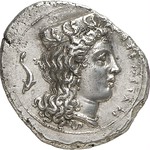 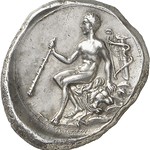
No. 93: THERMAE HIMERENSES (Sicily). Didrachm, 4th century B.C. Very rare. Extremely fine. Estimate: 45,000 euros 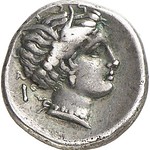 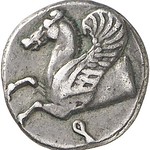
No. 202: ELIS (Peloponnes). Stater, ca. 450-440. Very rare. Extremely fine. Estimate: 15,000 euros 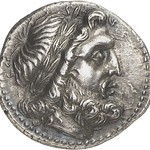 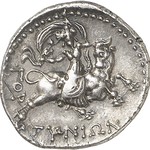
No. 208: GORTYN (Crete). Drachm, 3rd century B.C. From Hirsch Auction 173 (1992), 281. Rare. Extremely fine. Estimate: 2,500 euros 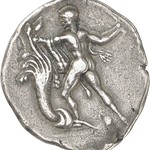 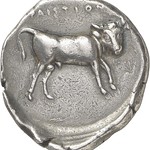
No. 210: PHAISTOS (Crete). Stater, 4th century B.C. From Künker Auction 94 (2004), 909. Rare. Very fine. Estimate: 4,000 euros  
No. 275: TARSOS (Cilicia). Mazaios, 361-334. Stater. Extremely rare. Extremely fine. Estimate: 20,000 euros 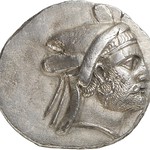 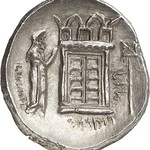
No. 297C: BAYDAD, King of the Parthians 3rd century B. C. Tetradrachm. Rare. Very fine to extremely fine. Estimate: 4,000 euros 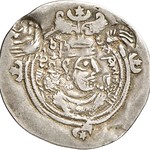 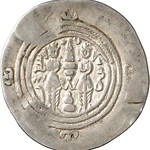
No. 304: AZARMINDUKHT, Queen of the Sasanian Empire 632. Drachm, Ctesiphon. Extremely rare. Very fine. Estimate: 6,000 euros 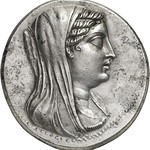 
No. 313: PTOLEMAIOS III, king of Egypt 246-221. Dodecadrachm, Alexandria. Extremely fine. Estimate: 20,000 euros 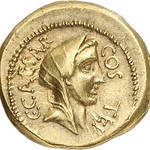 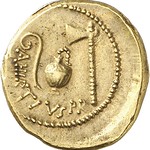
No. 374: C. IULIUS CAESAR, + 44. Aureus, 46. Almost extremely fine. Estimate: 5,000 euros 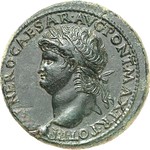 
No. 427: NERO, 54-68. Sestertius, 66, Lugdunum. From NAC Auction 52 (2009), 354. Extremely fine. Estimate: 17,500 euros 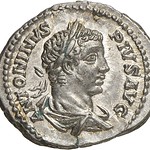 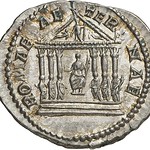
No. 470: CARACALLA, 197-217. Denarius, 206, Rome. Unique. From Tkalec Auction (1998), 217. Extremely rare. Extremely fine. Estimate: 3,500 euros 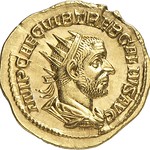 
No. 484: TREBONIANUS GALLUS, 251-253. Aureus, Rome. Extremely rare. FDC. Estimate: 30,000 euros 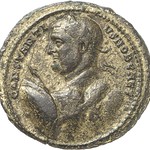 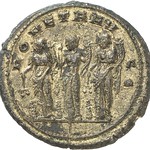
No. 498: CONSTANTIUS I CHLORUS Caesar, 293-305. Medallion, Rome. Unpublished, unique. Gold plating mainly intact. Extremely fine. Estimate: 8,000 euros 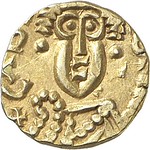 
No. 3001: MEROVINGIANS. Austadius, 640-680. Tremissis, no year, Cabilonnum (=Chalons-sur-Saone). Extremely rare. Very fine to extremely fine. Estimate: 2,000 euros 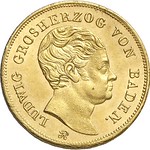 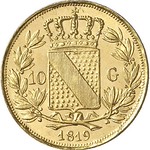
No. 3014: BADEN-DURLACH. Louis, 1818-1830. 10 guldens 1819. 4,332 pieces minted. Extremely fine to FDC. Estimate: 7,500 euros  
No. 3044: HAMBURG. Double taler 1694. Very rare. Very fine to extremely fine. Estimate: 10,000 euros 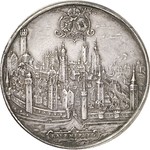 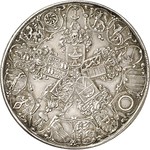
No. 3068: RAVENSBURG. Wide presentation taler 1624, Augsburg. 187 pieces minted. Very fine to extremely fine. Estimate: 5,000 euros 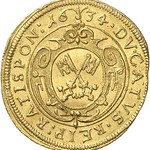 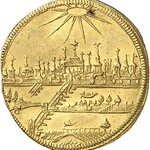
No. 3072: REGENSBURG. Ducat 1634. Very rare. Good extremely fine. Estimate: 4,000 euros 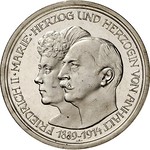 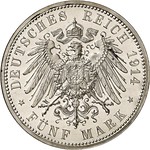
No. 3103: GERMAN EMPIRE. Anhalt. Frederick II, 1904-1918. 5 marks 1914 Silver Wedding Anniversary. J. 25. FDC. Estimate: 500 euros 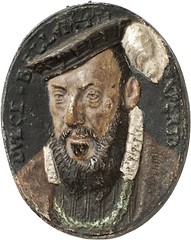
No. 3248: KOLB COLLECTION / MEDALS. Balduin Drentwett (Augsburg). Uniface hand colored plaster-medallion 1577 on the death of Sebastian Schärtlin of Burtenbach, Landsknecht and colonel. Extremely fine. Estimate: 200 euros 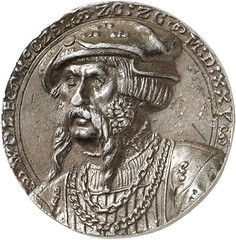
No. 3271: KOLB COLLECTION / MEDALS. Unknown mint master (Nuremberg). Uniface hand colored cast medal in lead 1525 on the great merchant Knight Wolf Ketzel of Nuremberg. Old cast. Very fine to extremely fine. Estimate: 150 euros 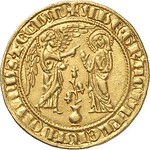 
No. 3366: ITALY / NAPLES and SICILY. Charles I of Anjou, 1266-1285. Saluto d’oro, no year, Naples. Very rare. Almost FDC. Estimate: 3,500 euros 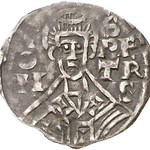 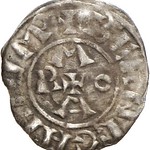
No. 3370: ITALY / VATICAN. John X with Berengar I. Denarius, no year, Rome. Extremely rare. Very fine. Estimate: 7,000 euros 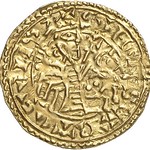 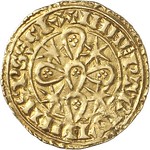
No. 3405: PORTUGAL. Sancho I, 1185-1211. Morabitino (180 dinheros) no year. Extremely rare. Extremely fine to FDC. Estimate: 15,000 euros 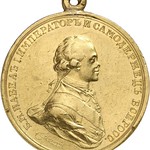 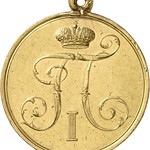
No. 3414A: RUSSIA. Paul I, 1769-1801. Golden Award medal, no year, signed by Leberecht. Extremely rare. Only known specimen on the market. Very fine. Estimate: 100,000 euros 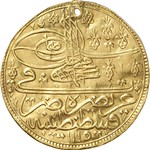 
No. 3550: OTTOMAN EMPIRE. Ahmad III, 1703-1730. 4 Kabir ashrafi. Extremely rare. Very fine to extremely fine. Estimate: 6,000 euros To visit the Gorny & Mosch web site, see:

Wayne Homren, Editor The Numismatic Bibliomania Society is a non-profit organization promoting numismatic literature. See our web site at coinbooks.org. To submit items for publication in The E-Sylum, write to the Editor at this address: whomren@gmail.com To subscribe go to: https://my.binhost.com/lists/listinfo/esylum All Rights Reserved. NBS Home Page Contact the NBS webmaster 
|